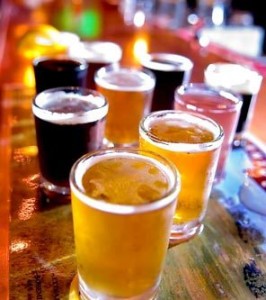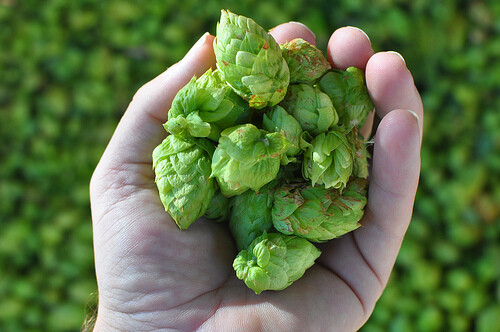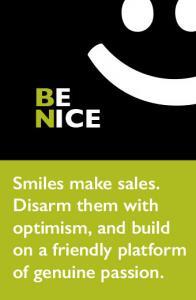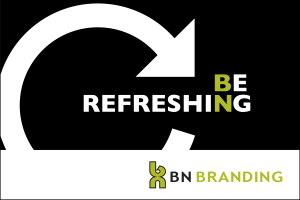![]() I had an experience in a brewpub some years ago that was inspiring and insulting at the same time. If you’re in the restaurant business — or any service business for that matter – you can learn from this little case of bad brewpub branding.
I had an experience in a brewpub some years ago that was inspiring and insulting at the same time. If you’re in the restaurant business — or any service business for that matter – you can learn from this little case of bad brewpub branding.
It proved that what you say, and how your front-line employees speak, can have a major impact on your branding efforts. And it proves that branding isn’t just a function of the marketing department.
Because it only takes one bad experience…
 Keep in mind, this Oregon where there are more brewpubs per capita than anywhere on earth. So craft brewing brands are plentiful and the competition is stiff.
Keep in mind, this Oregon where there are more brewpubs per capita than anywhere on earth. So craft brewing brands are plentiful and the competition is stiff.
If you don’t like the food or the service or the beer in one brewpub, just walk around block and try another one.
So a buddy and I popped into a brewpub for a burger and beer, après golf. We were parched.
The menu offered craft beers in all the usual colors and categories… a blonde, a red, an amber, a black, a pils, a pale ale, an IPA, etc. etc. Each beer choice had its own whacky name and an elaborate advertising claims that left us scratching our heads…
“Two more pounds of hops per barrel!”
“ 20% rye malt plus five domestic malts and two Northwest hop varieties.”
Ooooookay. Time for a translation.
We flagged down the waiter and asked for his recommendation. We’re not new to the craft beer scene, but we were hoping for a layman’s answer to a simple question: “What would you recommend for a hot summer day like today?”

“Oh. Well, the Monkey Fire Red Amber Ale has FRESH Willamette Valley hops,” he said in an assertive, somewhat snobbish tone.
As if that’s all we’d need to know.
Awkward silence… Wow. I’m thinking, “Uhhhhhhhh. So What?
What does fresh hops mean to my thirsty tastebuds? How is that going to affect the flavor of the beer? Yeah, but which one’s more refreshing?
My friend and I looked at each other, pondered that one, and turned back to the waiter for elaboration. The grungy young man just stood there, looking at us like we were from another planet.
Give me a break. If I wanted this kind of treatment I’d drink fancy wine. It was like an episode of Portlandia. Everybody knows the benefits of fresh hops, right?
Wrong. Boy, did we feel stupid.
The first rule of Brewpub Branding 101: Don’t make your customers or prospects feel stupid.
Nobody likes that. Even if they are dumb as a post.
It’s pretty much impossible to build brand loyalty when people feel excluded and stupid when they’re contemplating a purchase.

There are plenty of professionals who are good at making people feel dumb: Management consultants, financial advisors, IT guys, golf pros, and especially attorneys and doctors. It’s easy to make people feel stupid when you’re an expert in a field filled with jargon like medicine or law.
But a waiter in a brewpub??? Really.
Why would a brewpub waiter mess up a perfectly enjoyable experience with a veil of jargon and snobbery?
Maybe he thinks it increases the perceived value of their brewery. Or maybe, if he appears to be a complete beer nerd, it’ll earn him a better tip.
It’s understandable, but contrary to the laws of good brewpub branding. With great brands, customers feel included. Not excluded.
Companies like Apple openly invite everyone into the “club.” They don’t use high tech jargon that appeals only to early adapters and computer industry nerds, they use plain, everyday English that excludes no one. And once you’re in, you feel a genuine sense of belonging.
Unfortunately, a lot of business people feel compelled to overload their presentations, websites, sales pitches, ad copy and even waiter speak with esoteric nonsense that excludes everyone except the people within their own company.
And they justify it by saying “yeah, but we know our customers and we’re targeting a demographic niche that understands that stuff.”
Doesn’t matter.
Even if the target audience is brilliant enough to understand reams of engineering data and technical specs, that doesn’t mean you should baffle them with your insider-ese.
Brewpub branding is not unique. Every industry has its own vernacular. For instance, many business owners have heard TV advertising salespeople spewing on about Neilsons and CUME and gross rating points and impact quotients.
Inevitably, most business owners are left thinking, “Huh? So what?”
“What’s that mean to me? How’s that affect my budget? What’s it going to do for my business? What’s in it for me?”
Every time you leave someone with nagging questions like that, you’ve overlooked the real benefit of your product or service and you hurt the credibility of your brand.
In the end, we didn’t go with the waiter’s recommendation.
The beer we chose was quite good, even without the fresh, Willamette Valley hops, but the flavor was tainted by the experience we had and the nagging question the waiter never did answer.
He was so far inside that barrel of beer, he couldn’t possibly understand the consumer’s perspective.

Think about that. Think about the last conversation you had with a prospective customer, partner or key employee. What kind of language did you use? Was it loaded with insider information and industry jargon that sounds foreign to anyone outside your inner circle?
If it was, maybe it’s time to shut up and listen for a change. Put your ego aside and get some outside perspective. Turn off the doubletalk and turn back to plain English.
You might be surprised how persuasive plain speak can be.
For more on clear, convincing brand messages for your brewpub branding, try this post.
P.S. If any of you can explain the benefits of fresh hops, please leave a comment. I know we grow good hops here in Oregon, but I still don’t know what the big deal is about being fresh? Give me a break.
If you’d like to turn your company into an iconic brand, contact me here. Or reach out on LinkedIn.


I drink beer, but I certainly don’t know the value of fresh hops either. Too many companies never stop to think about the ultimate end user. Entrepreneurs especially tend to assume that everyone knows what they know, not realizing that if they DID, they would likely be a competitor, not a consumer. One of the best marketing tactics is to EDUCATE your customers so they can share their new knowledge with others as well.
Ive been reading your blog for a while. I’ve learned a lot so please keep it up for us to be updated!! Can you post more often?
I love the point of this piece: inclusion as a brand outcome. You can’t just speak to one audience. You need to account for the wide variety of audiences you’re reaching out to. Your experience may have been different if you were given a fun explanation of what fresh hops really mean. A time and place is available, as Gil says, to educate consumers. In any case, you’re spot on… nobody likes to feel excluded. They want to feel like they belong, that there’s a place for them.
Here’s a slightly different take:
Every brand should have its ‘exclusive club,’ the inner circle or insiders who speak and understand the jargon – the so-called innovators and early adopters. Apple, Harley, Silicon Valley, Wall St – all have them.
You guys happened to be in the wrong place – a place designed primarily for ‘beerheads’ with a Kiss of the Frhops (Fresh Hops to you).
Let the frothy brand debate begin…
As usual, John, a valuable post that is as much a pleasure to read as it is insightful.
David: My take on the point of the piece is inclusion as a tenet of the brand. This, of course, would then, by the very definition of “brand,” result in inclusion as an outcome. If inclusion is a value intentionally ingrained and appropriately executed in every point of contact a business, product, or service has with the world, then inclusion will, indeed, be the market’s experience.
Alan: Although I agree that there can be great value in a brand strategy that includes creating and nurturing an “exclusive club” as a subset of the overall market, I’m not sure it’s correct to say that “every brand should have” one. How much value is there in the jargon of Doritos or Charmin? (For that matter, how much jargon is there behind either of those brands or others like them?) And I am absolutely certain that John and his friend were NOT in the wrong place. It’s not like they crashed a private party or correctly guessed the password to get past the gatekeeper guarding the door in some dark alley. They were, in fact, two people where were hungry and thirsty, who enjoy good beer and the atmosphere of a brew pub, who happened to be in the vicinity of this particular new pub (which I assume gave no indication whatsoever that it was philosophically or operationally different than just about every other modern brew pub). Seems to me that they had every reason to believe they were in exactly the right place. If the intended brand of this pub is to be THE place for “beerheads,” it would be fair for the pub to make that obvious before even walking through the front door. Of course, I’m sure the owners of that brew pub have no desire to go out of business in record time, so they have at least been smart enough not to overtly stake the “Beerheads Only” point of differentiation.
–Tim
The pub sounds like a place only for beerheads that cater to people that know why you would want fresh hops. The server should have step their language when he/she noticed your blank stares.
Good point on Apple keeping it real. That’s why a lot of people like Apple because there is no jargon and not nearly as many options.
There is a market for almost everything and I’m sure this pub does very well. Another pub can fill in the need for beer menu interpreters.
This speaks really well to a point I believe strongly in: To communicate effectively, you must hear the message you’re communicating through your audience’s perspective. The waiter is a case in point. He would have been better off telling you that a certain beer is simply their most popular. And even better, if he had offered you small samples to try. (How on earth do you describe any unique flavor with words, and effectively communicate with any accuracy?) I would add that the ability to hear your message through the perspective of your audience is universal to ALL forms of communication, from high-level branding to the e-mails you send every day, as well as the conversations you have. Excellent post. Thanks.